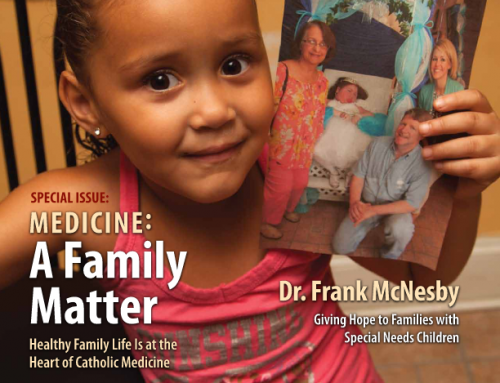João Bernardes, FEAMC Congress, Porto, October 2016
A contribution for a better understanding of motherhood. Interactions between maternal and foetal heart rates during labour in normal and distressed foetus / Une contribution pour une meilleur compréhension de la maternité. Interactions entre le rythme cardiaque de la mère et du foetus pendant l’accoucement du foetus normale et du foetus souffrant / Contribuição para uma melhor compreensão da maternidae. Interacções entre os ritmos cardiacos da mãe e do feto no parto no feto normal e no feto em sofrimento.
Summary /Résumé / Resumo
Motherhood involves complex mother-‐child interactions. We provide an overview of the interactions that occur between maternal and foetal heart rates (MHR-‐FHR) during labour, in naturally conceived pregnancies. Progression of labour has been associated with a significant increase in MHR and FHR linear variability indices, MHR accelerations and FHR decelerations, whereas entropy indices decrease, in both distressed (born with an umbilical artery blood pH<7.20) and non-‐distressed foetuses, denoting an increase in maternal and foetal distress. At the same time an increase in MHR-‐FHR correlations and differences in accelerations and decelerations has been observed in distressed foetuses, denoting an increase in maternal-‐ foetal attachment in these situations. These findings denote that during the important motherhood moments of labour and delivery, of naturally conceived pregnancies, there is an increase of signs of maternal-‐foetal attachment, namely in relation with the particularly risky final minutes of labour involving distressed foetuses.
Text /Texte / Texto
Introduction
During centuries a consistent, genetic, epigenetic, psychological and social, mater semper certa est (the mother is always certain) motherhood concept has remained well-‐established, considering the mother as the one where the child develops during pregnancy from her own gametes [1]. However, this concept has been challenged by surrogate pregnancies based on assisted reproductive techniques. In this way, the mater semper certa est concept may change to a mater semper incertus est (the mother is always uncertain) concept, where via surrogacy arrangements, the mother may be someone that has not been pregnant, with or without a genetic relation with the child [1].
In this setting, it is essential to understand what may be expected to change with the mater semper incertus est concept regarding the prevention of undesirable situations that may affect mothers and children.
In this communication we provide evidence on interactions between maternal and foetal heart rates (MHRFHR), during the important motherhood moments of labour and delivery that may be lost with gestationalsurrogacy.
Interactions between maternal and foetal heart rates during labour
In a study by Pinto et al. [2], 59 MHR and FHR recordings were simultaneously acquired in the final minutes of labour, in naturally conceived singleton term pregnancies, and were analysed by a computer system, following the International Federation of Gynaecologists and Obstetricians (FIGO) guidelines. MHR and FHR baselines, accelerations, decelerations, short (STV) and long term variabilities, their differences and correlations were assessed in relation to labour progression and to a newborn umbilical artery blood pH (UAB pH) < or > 7.20. To assess prediction of UAB pH, areas under ROC curves (auROC) were calculated. Progression of labour was associated with a significant increase in MHR accelerations and FHR decelerations
both in distressed (UAB pH < 7.20) and non-‐distressed foetuses (p<0.01), denoting an increase in maternal and foetal distress. At the same time there was an increase in MHR-‐FHR correlations and differences in accelerations and decelerations in distressed foetuses, denoting an increase in maternal-‐foetal attachment.
The auROC ranged between 0.50 for FHR accelerations to 0.77 for MHR baseline plus FHR STV, showing that the prediction of foetal distress may be improved with combined MHR-‐FHR analysis rather than with FHR analysis alone [2].
In another study by Gonçalves et al.[3], MHR and FHR were simultaneously recorded in 51 naturally singleton term pregnancies during the last two hours of labour and compared with the newborn UAB pH. Linear and entropy heart rate variability indices were computed separately for MHR and FHR.
Interaction between MHR and FHR was quantified through their correlation and cross-‐entropy. Progression of labour was associated with a significant increase in most MHR and FHR linear indices, whereas entropy indices decreased, denoting an increase in maternal and foetal distress. Prediction of foetal distress (UAB pH < 7.20 or 7.15) improved with combined MHR-‐FHR bivariate analysis, compared with FHR analysis alone, achieving sensitivity and specificity values of nearly 100% and 89%, respectively [3].
Contribution for a better understanding of the motherhood phenomenon during labour and foetal distress
The studies that have been performed on the interactions between MHR-‐FHR during labour, in naturally conceived term pregnancies, including distressed and non-‐distressed foetuses [2,3], denote that during the important natural motherhood moments of labour and delivery there is an increase of signs of maternalfoetal attachment, namely in relation with the particularly risky final minutes of labour involving distressed foetuses. Oxitocyn seems to play a central role in this process [2,3].It has also been shown that combined MHR-‐FHR analysis may improve the prediction of foetal distress, compared with FHR analysis alone [2,3].
These findings are in favour of the hypothesis that during the final moments of labour, of naturally conceived pregnancies, there is an activation of mechanisms of maternal-‐foetal interaction and protection.
Final remarks
We have provided evidence from two exploratory studies on the interactions between MHR-‐FHR during labour and delivery, with possible protective maternal-‐foetal effects that may be lost in surrogate pregnancies. Measures to overcome those and other types of potential losses of surrogate versus natural pregnancies have been proposed, such as the presence of the commissioning mothers during ultrasound examination and labour of the surrogate mothers, but these measures are controversial [4]. More studies are warranted having in mind the development of strategies to minimize risks for mothers and children.
References
1-‐ D’alton-‐Harrison R. Mater semper incertus est: who’s your mummy? Med Law Rev 2014;22(3):357-‐83.
2-‐ Pinto P, Costa-‐Santos C, Ayres-‐de-‐Campos D, Bernardes J. Computer analysis of maternal-‐fetal heart rate recordings during labor in relation with maternal-‐fetal attachment and prediction of newborn acidemia. J Matern Fetal Neonatal Med 2016;29(9):1440-‐4.
3-‐ Gonçalves H, Pinto P, Silva M, Ayres-‐de-‐Campos D, Bernardes J. Toward the improvement in fetal monitoring during labor with the inclusion of maternal heart rate analysis. Med Biol Eng Comput 2016;54(4):691-‐9.
4-‐ Dar S, Lazer T, Swanson S, Silverman J, Wasser C, Moskovtsev SI, Sojecki A, Librach CL. Assisted reproduction involving gestational surrogacy: an analysis of the medical, psychosocial and legal issues: experience from a large surrogacy program. Hum Reprod 2015;30(2):345-‐52.
Potential conflicts of interest
None.








